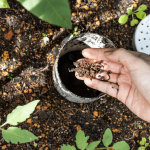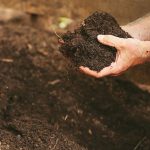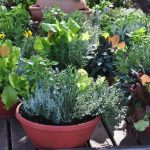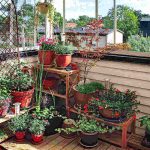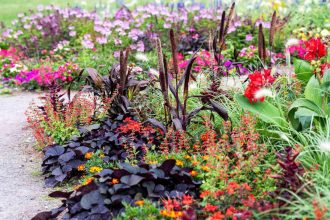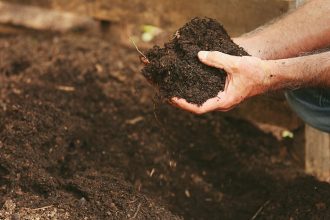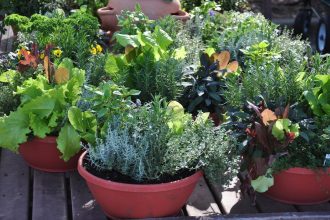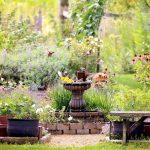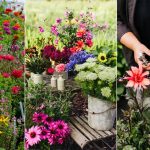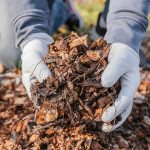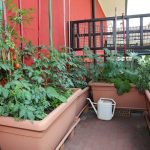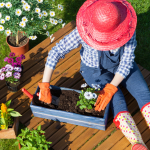Have you ever dreamed of cultivating a thriving garden filled with vibrant blooms and bountiful harvests? The journey from delicate seedling to flourishing plant can be a rewarding one, but it requires a carefully orchestrated transplanting process to ensure success. In this article, we will guide you through the essential steps and techniques needed to transplant seedlings successfully, empowering you to bring your gardening visions to life.

– Selecting the Right Seedlings for Transplanting
In order to successfully transplant seedlings, it is crucial to select the right ones for the job. This entails considering various factors such as the plant species, age of the seedlings, and their overall health.
Plant Species: Different plants have unique transplanting requirements, so it is important to choose seedlings that are suitable for the environment in which they will be transplanted. Researching the specific needs of each plant species beforehand can help ensure their successful growth and development.
Seedling Age: Younger seedlings tend to adapt more easily to transplantation compared to older ones. It is recommended to transplant seedlings that are still in their early stages of growth to minimize shock and increase their chances of survival.
Health Status: Healthy seedlings are more likely to thrive after transplantation. Look for seedlings that have strong stems, vibrant leaves, and a well-developed root system. Avoid selecting seedlings that show signs of disease or distress, as they may struggle to acclimate to their new environment.
By carefully selecting the right seedlings for transplanting, you can set the stage for successful growth and ensure a bountiful harvest in the future.
– Preparing the Transplant Site and Soil
When transplanting seedlings, it is crucial to properly prepare the transplant site and soil to ensure the success of your plants. By following these guidelines, you can increase the chances of your seedlings thriving in their new environment.
- Choose a suitable location: Select a spot in your garden that receives adequate sunlight for the specific type of plant you are transplanting. Make sure the area is well-drained to prevent waterlogging.
- Clear the area: Remove any weeds, rocks, or debris from the transplant site to give your seedlings the best chance to grow without competition for nutrients.
- Prepare the soil: Mix in organic matter such as compost or aged manure to improve the soil structure and provide essential nutrients for the seedlings’ growth.
By taking the time to prepare the transplant site and soil properly, you are setting your seedlings up for success and helping them establish strong roots in their new home. Remember to water the seedlings well after transplanting to help them adjust to their new surroundings.
– Ensuring Proper Care and Watering After Transplantation
After successfully transplanting your seedlings, it is crucial to ensure they receive the proper care and watering to help them thrive in their new environment. Here are some essential tips to follow for successful post-transplantation care:
– Watering:
– Water newly transplanted seedlings immediately after planting to help settle the soil.
– Water again the next day to keep the soil moist but not waterlogged.
– Monitor the moisture level daily and adjust watering frequency as needed based on plant needs and environmental conditions.
– Light Exposure:
– Place transplanted seedlings in a location with adequate sunlight or provide artificial light if needed.
– Ensure seedlings receive 6-8 hours of sunlight daily for optimal growth.
– Fertilization:
– Consider adding a light dose of fertilizer to help seedlings adjust to their new environment.
– Use a balanced fertilizer with equal parts nitrogen, phosphorus, and potassium to promote healthy growth.
– Protection:
– Protect seedlings from harsh weather conditions, such as strong winds or extreme temperatures, by providing shelter or using row covers.
– Monitor for pests and disease regularly and take appropriate measures to prevent damage.
– Monitoring and Managing Common Issues Post-Transplantation
After successfully transplanting seedlings, it is crucial to monitor and manage common issues post-transplantation to ensure the continued growth and health of your plants. Here are some tips to help you navigate potential challenges:
- Watering: Keep a close eye on soil moisture levels, making sure not to overwater or underwater the seedlings.
- Lighting: Ensure that the seedlings are receiving adequate light, either natural sunlight or artificial grow lights.
- Temperature: Maintain consistent temperatures to promote healthy growth, avoiding extreme hot or cold conditions.
Additionally, it is important to watch out for signs of stress or disease in the seedlings. Look for wilting, discoloration, or unusual growth patterns, and take immediate action to address any issues that arise. By staying vigilant and proactive in monitoring and managing common post-transplantation issues, you can help your seedlings thrive and reach their full potential.
As you embark on your seedling transplanting journey, remember to handle with care and nurture with patience. With the right techniques and a little TLC, your seedlings will thrive in their new home and grow into strong and healthy plants. So go ahead, put your green thumb to work and enjoy the rewarding experience of watching your garden flourish from tiny seedlings to bountiful harvests. Happy planting!


